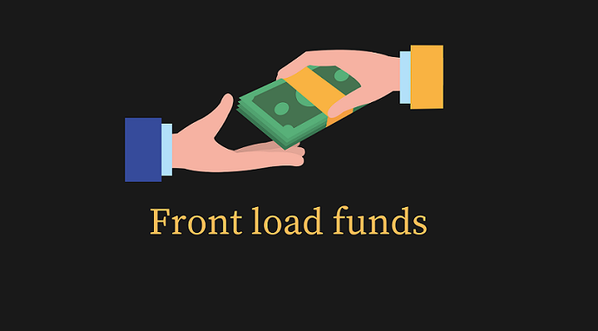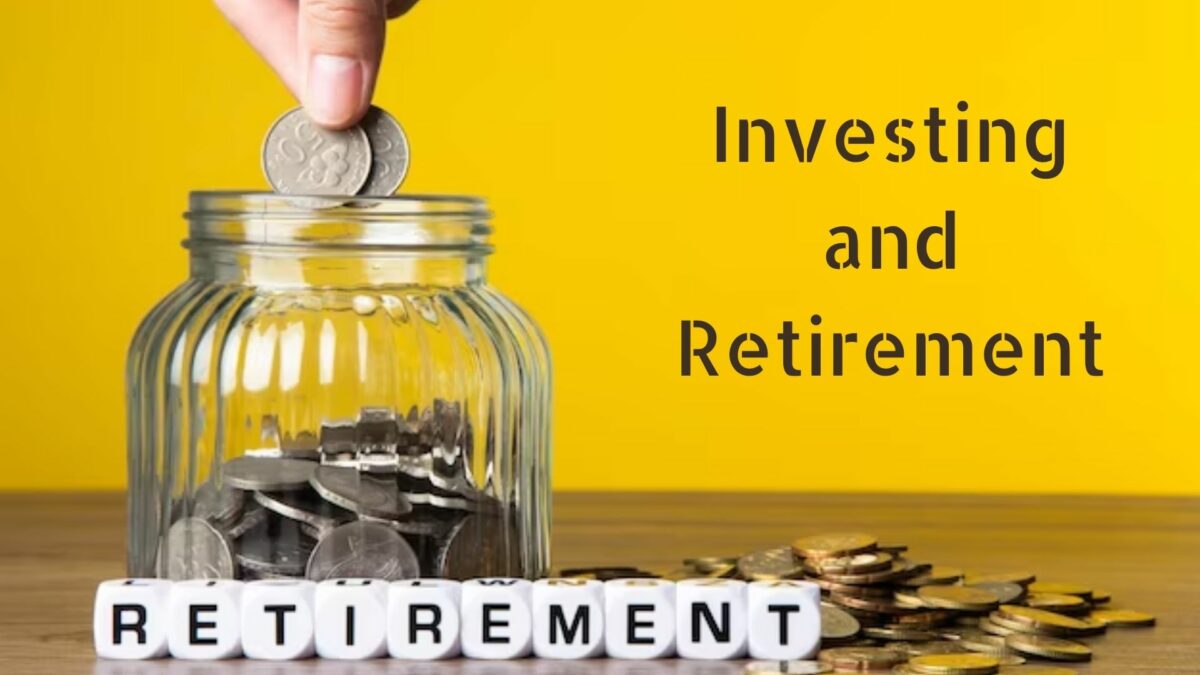“A good financial planner is going to do more than pick your funds.”
–Dave Ramsey
Very recently, personal finance guru Dave Ramsey engaged in a heated discussion on Twitter with several financial planners regarding the appropriateness of his investment and retirement withdrawal advice. The questions were (and are) very legitimate ones, namely:
Why does Dave Ramsey keep telling people to invest 100% in equities and that they can expect 12% returns?
and
Why does Dave Ramsey keep telling people that they can safely withdraw 8% of their net worth each year in retirement?
Instead of actually addressing the questions with a cogent, thoughtful, defensible response, he resorted to ad hominem attacks against financial planners who hold a fiduciary duty to their clients, Carolyn McClanahan and James Osborne.
I’m a fan of Dave Ramsey’s debt advice. I regularly tell people to go to the local library and check out The Total Money Makeover if they’re deeply in debt because there’s no point in paying me to get the same advice that they can get for free by checking that book out of the library.
But, I have serious and deep concerns about the investment and retirement asset management advice that he gives to his listeners.
Six Areas Where I Disagree With Dave Ramsey’s Advice

There are six areas of disagreement I have with the investment and retirement advice that he provides to his listeners and to his readers.
Investment advice disagreement #1: You can expect a 12% average return
Even if the average returns of the market were 12%, which they’re not, he’s making a very simple, basic mathematical mistake. He is confusing average returns and compound returns. In average returns, the sequence of returns doesn’t matter. In compound returns, the sequence of returns does matter.
Let’s look at an example.
Say you invested $1,000 in Widgets, Inc. The first year, Widgets Inc. loses 10%. At the end of the year, you have $900 of Widgets, Inc. stock. The second year, Widgets Inc. gains 20%. At the end of year 2, you have $1,080 of Widgets, Inc. stock.
The average return during that two year period was 5%. But, applying an average 5% return over a two year period would mean that you should have $1,102.50 in Widgets, Inc. stock. You don’t. You only have $1,080 of Widgets, Inc. stock.
Your compound average growth rate (CAGR), or compounded annual return, was 3.92%.
If you report the average annual return, you get to say that you averaged 5% per year.
If you return the annual return that you see in your personal holdings, then you averaged 3.92% per year.
Compounded over time, that’s a big difference.
I don’t believe that Dave Ramsey is trying to mislead anyone here. I think he really thinks that the average annual return is the correct number to report when it’s not.
He does argue two counterpoints to this issue. The first is that saving 15% per year during your working lifetime for retirement is more important than the returns that you’ll get. He’s right, but not by the wide margin that he tells his audience. Furthermore, his newsletters encourage working backwards from a 12% return rather than saving 15%. That advice is contradictory.
If an average family, earning $52,762 (the national average family income), saves 15% of their income every year for 40 years and receives the compounded average growth rate of the market, adjusted for inflation, which is 6.69%, that family will end up with $1,556,686.83. Using a 4% withdrawal rate (which contradicts his advice, a point we’ll address below), that provides the family with $62,267.47 per year. The family will be in good shape, but not in the shape that a 12% return assumption would lead them to believe – $6,799,510.70 versus $1,556,686,83 – a 77% difference.
The second counterpoint is that he uses 12% as an educational example and that he can point to mutual funds which have made 12% over a long period of time. We’ll deconstruct his picks further down, but using 12% as an “educational example” brushes over an important aspect of the differentiator between a “guru” (which he undoubtedly is and deserves the title) and an actual, fiduciarily bound advisor. He’s not bound by a fiduciary duty. It’s not investment advice. That’s why he won’t tell people which mutual funds to invest in. I can’t either, unless you’re a client, but I can certainly tell you which ones to avoid, such as mutual funds that have exorbitant loads. Again, more on this later.
If you think that you’re going to get a 12% average return, then you’ll simply plug 12% into your numbers each and every year, and that’s wrong. The market has ups and downs. To simply say 12% per year every year is naïve and can lead you to significantly overestimate the value that your nest egg will hold when it comes time to retire. It is possible to become anchored (to read how the anchoring bias affects your retirement decisions, read “The Difficulty of Predicting Your Retirement Number”) to the 12% return and not follow the 15% savings rule, and that will lead to serious repercussions when you reach retirement age if you save less because you think that you can get a higher return than you probably will.
Which leads me into the second area of disagreement.
Investment Advice Disagreement #2: Continuing to be Invested Completely in Stocks in Retirement

Once you retire, you’re basically trading sources of income from wages to money produced by the assets you’ve saved up and invested in. While some of you may plan on working part-time in retirement, it’s quite possible to expect that you may not be able to work once you’re in retirement. Furthermore, as you age, the probability that you can get back to work declines, both because of mental and physical frailties and because the absence from the workforce will make it increasingly difficult to get a job.
Thus, unless you’re the rare person who will work until age 103 and die at the desk, you’re going to have to rely on your nest egg and Social Security to support you. In most cases, Social Security will not be sufficient to allow you to maintain the lifestyle you had during your working years (and hopefully, many of you will be able to retire before Social Security starts), so you’re going to need an additional source of income.
That income will come from your assets.
Now, it’s possible that you may never need to purchase bonds in retirement, but you will need some source of income. Relying solely on the dividends and capital gains provided by stocks is an extremely risky way of doing so unless your asset base and the dividends it produces far exceed your income needs.
It’s not wise to go completely in the other direction, either, and dump everything you have into CDs. If you choose that route, while you won’t lose money, you will lose purchasing power. Ultra-safe, income-generating investments like CDs and money markets do not beat inflation. This means that, over time, what you can buy for your money will decrease. Given that the biggest increase in expenses and the biggest inflationary cost in retirement is healthcare, this failure to match or beat inflation will mean that when you need more money to cover declining health or long term care, you won’t have the financial wherewithal to afford the care that you need.
That’s why I generally suggest that people aim to have 110 – age as a percentage of the portfolio to keep in equities and the remainder in income generating assets. If you are retired and have all of your investments in equities and the market tanks, then you’re going to be faced with a double whammy of a shrunken nest egg and having to withdraw from it when it’s been hit. Since bonds and equities usually are countercyclical, the impact of a down market year won’t be as bad.
While Dave Ramsey says that you can withdraw 8% per year from your portfolio in retirement based on a 12% rate of return and 4% inflation, the reasoning behind how he gets to that conclusion is where the advice causes me to disagree. First off, as I have pointed out, he uses incorrect calculations in determining 12%, but that’s not really the issue. The issue is that you won’t get 12% (or 15% or 3% or whatever rate of return you want to depend on) every single year. If that was the case, and your returns were steady every single year and at or above the rate of inflation, then you could withdraw the gains and not have to worry about depleting your nest egg.
The problem is that returns aren’t always going to be above the rate of inflation. The way that Dave Ramsey reaches the 8% withdrawal rate is outlined below. His newsletter outlines the example of a hypothetical couple who has saved $1.2 million for retirement.
Now, envision what retirement will look like for you by estimating the income your nest egg will bring. Using the example above, our couple’s $1.2 million will remain invested and growing at the long-term historical average. Estimating inflation at 4% means they can plan to live on an 8% income, or $96,000 a year ($1.2 million x 8% = $96,000).
This plan allows you to live off the growth of your savings rather than depleting it. With careful monitoring and some modest adjustments in years with low returns, you can be confident that your savings will last throughout your retirement.
This hypothetical couple lived off of $50,000 per year. Suddenly, they’re going to jump on the hedonic treadmill and start living on whatever above inflation their investments return.
Unfortunately, they still have minimum living expenses. They lived on $50,000 per year beforehand, and they were saving 15% per year, so their true living expenses were $42,500 per year. Therefore, in down years, they have to still eat and live, meaning that they need to eat into the nest egg to pay for food, shelter, clothing, and transportation.
Although I’m no fan of aftcasting, it is instructional to use historical stock market returns to give you an idea of how often this plan succeeds.
I set forth a couple of rules.
- If the returns exceed the inflation adjusted annual expenses, then spend the returns. Do not deplete the nest egg.
- If the returns do not exceed the inflation adjusted annual expenses, then spend the inflation adjusted annual expenses. Deplete the nest egg only to the extent necessary to meet minimum spending needs.
Using 3% as annual inflation (which would benefit the Dave Ramsey approach, as that requires less money be spent in lean times), if I run the hypothetical retirees through 30 years of retirement for every year since 1926 using actual stock market returns, the retirees run out of money 49.1% of the time.
I don’t want to use a plan which has a slightly better than 50% chance of succeeding.
The reason that academics and practitioners promote 4% (or even less) as a safe withdrawal rate in retirement is that you need to reinvest excess gains in years with strong returns to give yourself enough buffer so that you don’t deplete your assets in years when returns are below the rate of inflation.
An improved solution in this situation is to set up a maximum cap of spending. If we set up an inflation-adjusted cap of $100,000 per year, then the plan has a 93% chance of succeeding.
There’s one problem with creating a solution that has such a broad range of spending. These retirees are going to experience some serious shocks and whiplash in their lifestyles. One year, they’re spending $106,090 and living fast and free, and the next year, they have to slam on the brakes and live on $46,440.90. The constant hedonic adaptation that one must undergo to constantly vacillate between salad and lean years is going to take an enormous psychic cost and will be a very difficult to live within.
The better approach is to work backwards from a retirement spending goal and a much smaller range and adjust it for annual inflation. Then apply a withdrawal rate such that the chances of running out of money before running out of heartbeats is minimal.
Investment Advice Disagreement #3: Recommending Front-Loaded Mutual Funds

On June 4, 2013, Dave Ramsey invited a Motley Fool staff writer onto his show to discuss an article that was published at the Motley Fool website discrediting Ramsey’s assumed rate of returns. I’ll discuss more about that hour of the episode later, but for this disagreement, I want to pull out a particular piece of the discussion.
The crux of the hour-long dialogue was that Dave Ramsey often quotes 12% as an average annual return, which is close to the S&P 500 average return (discussed in disagreement #1). Ramsey’s retort was that he has found funds which return more than the S&P 500 and have a history of doing so.
He cited two funds: Investment Company of America (AIVSX) and Growth Fund of America (AGTHX). He also encourages people to utilize loaded mutual funds on his website.
Both of the funds he cited have a 5.75% front load.
I’ve previously explained why loads on mutual funds destroy your nest egg. Let’s demonstrate how the 5.75% front load affects the returns for the hypothetical couple that we discussed above. As the example pointed out, this was a couple that made $50,000 per year and invested 15% of their earnings. How would they do with each of these mutual funds after paying a load?
AIVSX
Since the historical data from Yahoo Finance goes back to May 31, 1996, I’ll assume that this family invests 25% of their $7,500 per year, or $1,875 on May 31 of each year (or the first available trading date after May 31). They pay a front load varying from 5.75% down to 4.5% based on the breakpoints for loads in the fund (for which their salesman thanks them), and between $1,767.19 and $1,790.63 goes into the actual mutual fund. They will reinvest dividends and capital gains.
As of June 4, 2013, their investment would be worth $57,079.74. 17 years of contributions totaling $31,875 has gained them $25,204.74 in profit, for a 79.1% return. This is an average return of 4.65%, or an annualized return (CAGR) of 3.49%. They paid $1,818.75 in loads for this privilege.
AGTHX
Since the historical data from Yahoo Finance goes back to February 11, 1993, I’ll assume this family invests 25% of their $7,500 per year, or $1,875 on February 11 of each year (or the first available trading date after May 31). They pay a front load varying from 5.75% down to 4.5% based on the breakpoints for loads in the fund (causing glee in the salesman’s heart), and between $1,767.19 and $1,790.63 goes into the actual mutual fund. They will reinvest dividends and capital gains.
As of June 4, 2013, their portfolio would be worth $100,789.89. 20 years of contributions totaling $37,500 has gained them $63,298.89 in profit, for a 168.8% return. This is an average return of 8.44%, or an annualized return (CAGR) of 5.39%. They paid $2,001.56 in loads for this privilege.
Now, let’s compare how these two investments would perform versus their Vanguard Index counterparts.
VFINX vs AIVSX
The Investment Company of America’s fund invests in blue chip stocks, comparable to the S&P 500. Thus, an appropriate index fund comparison is the Vanguard 500 Index Fund (VFINX).
If the same family had purchased VFINX compared to AIVSX, they would have $57,696.02 as of June 4, 2013. That is $616.28, or 1.08% more.
To break even and erase the effects of the loads on performance, the family would have to contribute $1,999.94 per year, or $21.36 more to that fund.
NAESX vs AGTHX
The Growth Fund of America is a growth fund that invests in smaller capitalization stocks with the intent of gaining appreciation over time as these stocks grow. Thus, an appropriate index fund comparison is the Vanguard Small Cap Index Fund (NAESX).
If the same family had purchased NAESX compared to AGTHX, they would have $113,357.18 as of June 4, 2013. That is $12,558.29, or 12.5% more. To break even and erase the effect of loads and underperformance, the family would have to contribute $2,223.08 per year, or $244.50 more.
In the first case, the loads outweigh the outperformance of the fund. In the second case, even if you took away the load, the fund still underperforms its index counterpart.
Ramsey’s argument for loaded mutual funds is that purchasing a loaded mutual fund keeps you in the market when the market goes down and it prevents you from panic selling. This is an argument we’ve discussed before, but the simple counterargument is the best one.
If you’re taught to properly invest and understand the risks involved in jumping ship when the market declines, you’ll act correctly. It costs a whole lot less to get that training (and a full, comprehensive financial plan while you’re at it) than to rack up thousands of dollars in mutual fund loads.
Investment Advice Disagreement #5: Disregarding Fees in Investments

In his book Financial Peace Revisited (#aff), Dave Ramsey states the following:
The biggest mistake people make is putting too much emphasis on expenses as a criterion.
As I demonstrated in the above example, for disagreement #4, fees killed the returns in the VFINX versus AFINX horserace. Without fees, AFINX would have been a superior investment, but fees made the Vanguard counterpart a superior investment.
Investment Advice Disagreement #6: Promoting Actively Managed Mutual Funds

I have previously discussed how, in a time when information becomes more and more widespread, luck plays an increasing role in explaining extremes in performance. Since the highest skilled investors are, relatively speaking, only marginally better than the least skilled investors, the remaining differences in performance are generated by luck.
But, let’s say that you poo-poo the notion that you have to be lucky to get outsized returns in the market. Let’s assume that mathematics is wrong and it doesn’t take up to 64 years to determine if you’re skillful. You can look at the past 20 years of returns, as Ramsey suggests, to determine whether or not you have a winner on your hands.
There are still risks involved in choosing an actively managed fund:
- The manager’s retirement risk. Few people like to continue to work at picking stocks like Warren Buffett does. Even Benjamin Graham retired after a few years. What happens when a fund manager decides to hang up his boots and ride off into the sunset? You now get to start all over with a new fund manager and have to wait another 20 years before determining if that manager knows what he or she is doing.
- Tax risk. Actively managed mutual funds, as is implied by the name, trade more often than index funds. Because of the increased trading, the investor must pay short-term and long-term capital gains taxes. If the funds are in a tax-deferred or tax-free retirement account, this is a moot point, but for investments in normal brokerage accounts outside of a tax shelter, this is important and reduces the after-tax returns of these investments.
- Concentration risk. I don’t mean that the manager is going to daydream, but, rather, that you’ll be more concentrated in an actively managed fund when you will be in an index fund. The active manager should, by definition, be picking fewer stocks for the fund than the index counterpart, since he’s supposedly picking the best of the litter. This is great when his bets are right and disastrous when his bets are wrong.
The statistics simply are not on the side of actively managed mutual funds. First off, for the past five years, of all of the different mutual fund categories, active management underperforms the index counterparts in all but one: large-cap value funds, where 50.22% of actively managed funds outperformed their index counterparts. For the other 16 categories, index funds outperformed actively managed funds.
Secondly, even if you pick a high performing fund, there is little assurance that said high-performing fund will continue to do well. If you picked an actively managed mutual fund that was in the top 20% of performance over the previous five years, there was only a 0.18% chance that it would remain in the top 20% of performance over the next five years. If you were a little more lax in the standards and only picked a fund that was in the top half of performance (which would not guarantee that it outperformed its index counterpart) in the previous five years, there was a 4.46% chance that the fund would remain in the top half in the next five years.
The statistics simply are not in your favor if you choose actively managed funds and are investing for the long term; it is more likely than not that you will choose funds which underperform their index counterparts.
In the previously discussed June 4, 2013 show, Dave Ramsey categorized people who questioned his advice as one of two types of people:
- Bitter people who say that they can’t win and they can’t be millionaires. I daresay that any casual reading of my body of work will disprove both of those notions.
- Financial nerds who analyze and analyze (his emphasis, not mine) everything to the nth degree and don’t learn about what Dave Ramsey teaches. I’ve gone through the Financial Peace University course, read The Total Money Makeover, and listened to hundreds of his podcasts. I understand his advice, quoted his website (which he, in the show, admitted he doesn’t read everything which gets published there), and have applied analytical rigor to what he teaches. He also says that those financial nerds don’t have a business and are bored. I have a business, serve my readers, and am far from bored (oh, and I already built and sold another business). I just want people to get proper guidance, regardless of the source.
Dave Ramsey’s biggest argument during the discussion was “If they [his listeners and readers] follow all of my advice, they are not being harmed.” That is true. They should not be harmed, although his advice for withdrawing funds during retirement could be harmful for retirees; however, just because someone isn’t harmed doesn’t mean that the person can’t do better.
The lesson of all of this is to apply a critical eye to everything you hear or read. Just because information comes from a “guru” or from a website you like doesn’t mean it’s always going to be right. Don’t take things at face value. Think. Question. Ask yourself how something could go wrong. Determine what would happen to you if the assumptions you make about future outcomes don’t work the way you planned. Have a backup plan and a backup plan after that. Don’t just take it on blind faith that because someone told you that something would work a certain way that is well when it comes to planning for your retirement. Make sure that you understand what information and assumptions are being used to make your plan and how those affect the outcome.
Then, you might have financial peace.
Author Profile
- John Davis is a nationally recognized expert on credit reporting, credit scoring, and identity theft. He has written four books about his expertise in the field and has been featured extensively in numerous media outlets such as The Wall Street Journal, The Washington Post, CNN, CBS News, CNBC, Fox Business, and many more. With over 20 years of experience helping consumers understand their credit and identity protection rights, John is passionate about empowering people to take control of their finances. He works with financial institutions to develop consumer-friendly policies that promote financial literacy and responsible borrowing habits.
Latest entries
 Low Income GrantsSeptember 25, 2023How to Get a Free Government Phone: A Step-by-Step Guide
Low Income GrantsSeptember 25, 2023How to Get a Free Government Phone: A Step-by-Step Guide Low Income GrantsSeptember 25, 2023Dental Charities That Help With Dental Costs
Low Income GrantsSeptember 25, 2023Dental Charities That Help With Dental Costs Low Income GrantsSeptember 25, 2023Low-Cost Hearing Aids for Seniors: A Comprehensive Guide
Low Income GrantsSeptember 25, 2023Low-Cost Hearing Aids for Seniors: A Comprehensive Guide Low Income GrantsSeptember 25, 2023Second Chance Apartments that Accept Evictions: A Comprehensive Guide
Low Income GrantsSeptember 25, 2023Second Chance Apartments that Accept Evictions: A Comprehensive Guide

